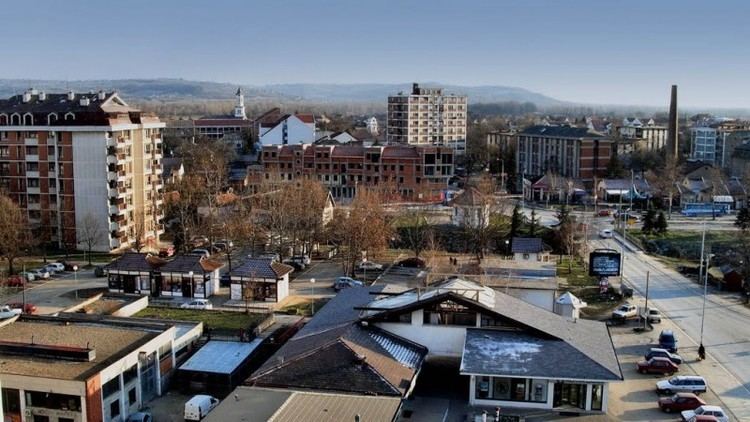Settlements 29 Postal code 11500 Area 411 km² | Time zone CET (UTC+1) Area code +381 11 Local time Wednesday 6:38 AM | |
 | ||
Weather 11°C, Wind SE at 8 km/h, 71% Humidity | ||
Mtb street view 60 belgrade ub serbia 2 2 from obrenovac to ub 05 2013
Obrenovac (Serbian Cyrillic: Обреновац, [obrěːnoʋat͡s]) is a suburban neighborhood and one of 17 city municipalities which constitute the city of Belgrade, the capital of Serbia. According to the 2011 census results, the municipality has a population of 71,419 inhabitants, while the urban area has 24,568 inhabitants.
Contents
- Mtb street view 60 belgrade ub serbia 2 2 from obrenovac to ub 05 2013
- Map of Obrenovac Serbia
- Geography
- History
- Economy
- Education
- Public transport
- International cooperation
- References
Map of Obrenovac, Serbia
The largest Serbian thermal power plant TPP Nikola Tesla is located on the outskirts of the municipality. Obrenovac was also submerged and completely evacuated during the 2014 Southeast Europe floods.
Geography
Obrenovac is situated 30 km south-west of central Belgrade near bends of the river Sava to the north. The river Kolubara flows to the east of the town on its way to join the Sava.
Total land area of the municipality of Obrenovac is 411 km2 (159 sq mi). Apart from the town, it consists of the following villages:
Some of the neighborhoods in the town are Topolice, Rojkovac, Dudovi, Rvati, Muzička kolonija,Sljivice, Belo polje, Gaj and Stočnjak.
History
In the Middle Ages, the area was part of Serbian states. King of Srem Dragutin Nemanjić ruled it between 1282 and 1319, and established monasteries in Grabovac and Mislođin. In 1521, it was conquered by the Ottoman Empire, who ruled it for the next 300 years. Subsequently, it was site of numerous battles in frequent Ottoman–Habsburg wars and often changed hands. Austrian Regent of Serbia Charles Alexander, Duke of Württemberg built a summer house in nearby village of Stubline (then Neudorf). During a period of Austrian rule, between 1688. and 1717, the town was called Zweibrücken ('two bridges'), and during the Turkish rule it was called Palež ('arson'), possibly as a reference to frequent looting and fires it was subjected to.
On 11 April 1815, during the Second Serbian Uprising, the town was burned to the ground by Serbian forces in a battle against Ottomans. It was restored in 1859 by prince of Serbia Miloš Obrenović, after whom it was named. The Municipality of Obrenovac was incorporated within community of Belgrade municipalities in 1957.
The Day of the Municipality is December 20, the date of the decree of Prince Miloš Obrenović by which the name of Obrenovac was instituted, and its patron day is the Holy Trinity.
Obrenovac was Serbian town which suffered the greatest damage by the unprecedented floods in May 2014. Most of the population has been evacuated to safety. Sudden surge of water from Kolubara river on May 15 devastated the town, killing at least 14 persons, with several persons still missing.
Economy
Largest Serbian thermal power plant TPP Nikola Tesla is located on the outskirts of the town; its chimney is widely visible as the surrounding area is generally flat.
There is a green market in the centre of the town, and also flea market (as of August 2006) to the south of the town on the Valjevo road. The most famous football club from Obrenovac is FK Radnički Obrenovac; its stadium is beside the Belgrade road. The oldest school in the town is found next to Topolice. It carries the name of Jovan Popović. The school was built by Miloš Obrenović.
Education
Public transport
Three bus lines connect Obrenovac with Belgrade: 860, 860E and 861A.
International cooperation
Obrenovac is twinned with following cities and municipalities:
